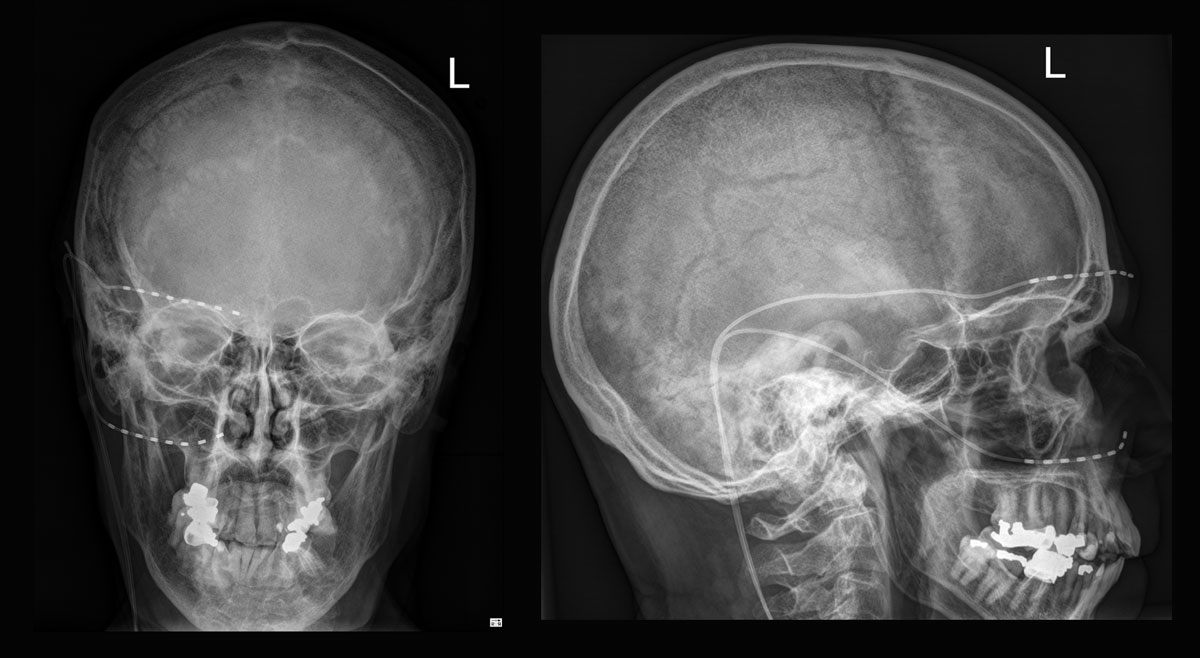
Chronic craniofacial pain can be hard to treat due to difficulties in understanding the pathology and pain pathways involved. Typical conditions include trigeminal neuralgia and post-traumatic trigeminal neuropathy, post herpetic neuralgia, occipital neuralgia and migraine headache.

Many patients have tried and failed conventional treatment with drugs, and experience significant functional impairment eating, or talking in the case of trigeminal neuralgia, exquisite allodynia to touch in facial post herpetic neuralgia, and prolonged social and work ‘down time’ with occipital neuralgia and migraine.
The mainstay of drug treatment for craniofacial neuralgias is anticonvulsants (e.g. carbamazepine lamotrigine) gabapentin and pregabalin. Baclofen and onabotulinum toxin (Botox) are also used. Anticonvulsant use is often limited by adverse cognitive side effects, compounded by use of multiple agents or opioids.
Less frequent severe adverse effects include skin rashes (Stevens-Johnson syndrome), drug-induced hepatitis and aplastic anaemia and agranulocytosis with carbamazepine.
Despite experiencing partial control or remission of craniofacial pain with medication, patients often seek better symptom control through interventional techniques.
Although effective, these can cause adverse neurological side effects. Even microvascular decompression of the trigeminal ganglion, offering a high rate of long-term remission of trigeminal neuralgia, can cause cranial nerve deficits (e.g. unilateral deafness).
Radiofrequency thermal ganglionotomy for trigeminal neuralgia invariably causes some facial numbness. Whilst not a significant problem if confined to the second and third divisions of the trigeminal nerve, it can lead to corneal keratitis if the first division is lesioned.
Careful intraoperative electrical stimulation and lower thermal temperatures during lesioning reduces facial numbness but at a price of shorter remission periods. Gamma knife-focused beam radiation aimed at the trigeminal root entry zone can help patients with trigeminal neuralgia unsuitable for decompression or radiofrequency treatment.
Occipital neuralgia can respond to radiofrequency thermal lesions of the second cervical dorsal root ganglion and third occipital nerve with quite prolonged periods of remission but, again, at the price of temporary post cervical area altered sensation and ‘burning’ dysaesthesias.
Non-destructive electrical stimulation of cranial nerves or upper cervical nerve roots (neuromodulation) can provide very good analgesia with reduced downside risk as these electrodes are implanted subcutaneously through an introducing needle under ultrasound control.
The active electrode segments are placed adjacent to craniofacial sensory nerves including the supra and infraorbital nerves, the greater and lesser occipital nerves and even uncommon targets such as the auriculotemporal nerve and mandibular division nerves.
An alternative placement in the cervical epidural space increases risk but can be effective for craniofacial pain states. Implanted systems can always be removed with little loss for the patient except perhaps financial expense, as these systems can be pricey.
The introduction of sub-threshold stimulation waveforms in the past decade, especially 10 kHz high frequency stimulation and burst stimulation algorithms, have eliminated the often unpleasant paraesthesia sensations experienced in the face or occiput with earlier low (1-100 Hz) frequency systems.
The newer waveforms have been shown to greatly improve the efficacy of stimulation compared with older ‘tonic’ waveform devices.
Key messages
- Chronic craniofacial pain can be difficult to manage
- Current treatments often have adverse effects
- Non-destructive treatments offer analgesia and are simple to apply
References available on request.
Questions? Contact the editor.
Author competing interests: nil
Disclaimer: Please note, this website is not a substitute for independent professional advice. Nothing contained in this website is intended to be used as medical advice and it is not intended to be used to diagnose, treat, cure or prevent any disease, nor should it be used for therapeutic purposes or as a substitute for your own health professional’s advice. Opinions expressed at this website do not necessarily reflect those of Medical Forum magazine. Medical Forum makes no warranties about any of the content of this website, nor any representations or undertakings about any content of any other website referred to, or accessible, through this website.

